Faster wound healing?
With “cold plasma”, based on German basic research in space
Wounds heal faster if no interfering bacteria, viruses, and fungi compromise the regeneration of the body. For this reason and to prevent infection, wounds are disinfected. However, not all disinfectants take effect on resistant germs, and especially large, open wounds can hardly be disinfected. The solution: the plasma care device from terraplasma medical. It produces “cold plasma”, a mix of electrons, ions, and excited atoms. The disinfection of one square centimetre of skin takes just 30 seconds and is completely pain-free. The effect: wound healing is speeded up by up to 30 per cent.
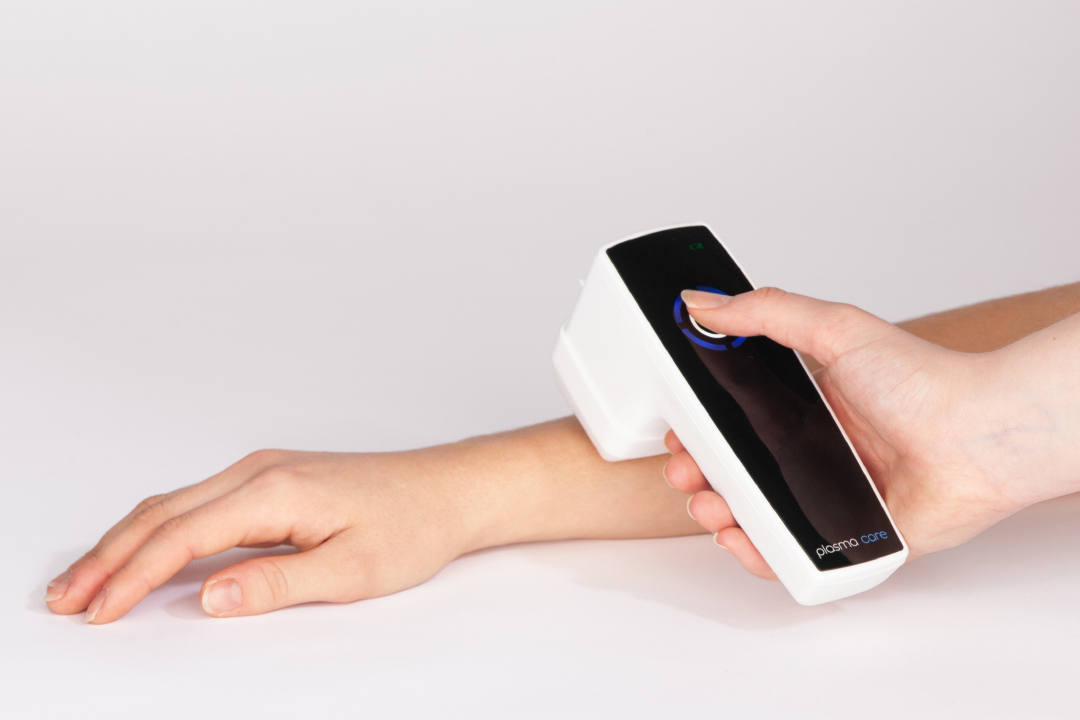
© 2020 terraplasma medical GmbH
Here’s how it works: the reactive electrons, ions and excited atoms of the plasma tear micropores in the cell membranes of microorganisms, thus enabling the reactive particles of the plasma to enter the cell. There, they come upon the cell’s genome and destroy it. Bacteria, viruses, and fungi die off, even if they are resistant to medication. And how do the human cells survive? The genome of human cells is protected by a cell nucleus membrane and cytological protection mechanisms. The cell is not damaged within the short period of application.
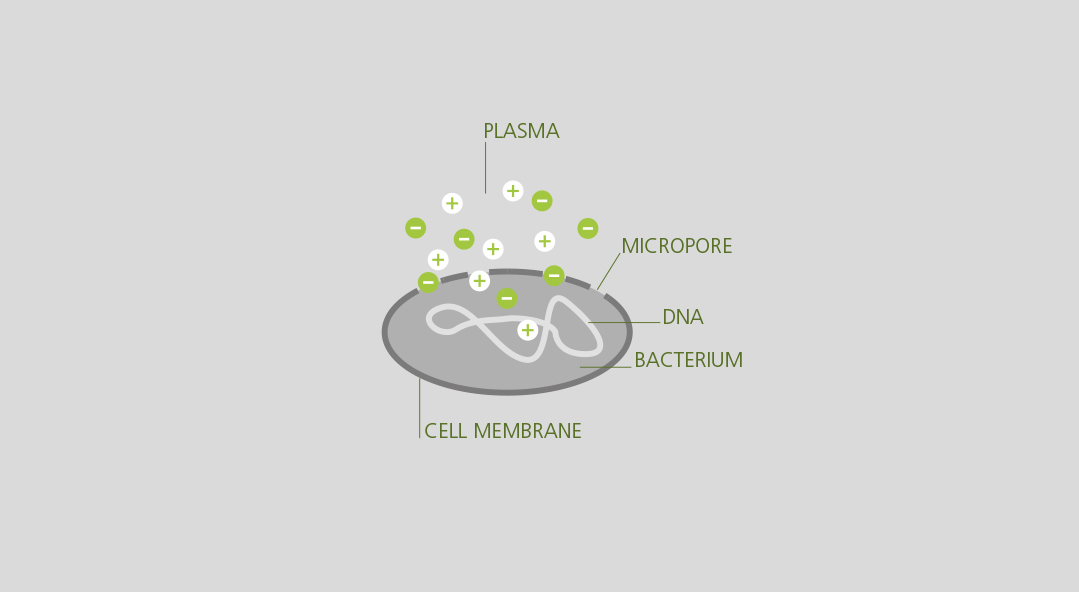
© 2020 terraplasma medical GmbH
The technology was enhanced by terraplasma from Garching, a spin-off of the
Max Planck Institute for Extraterrestrial Physics. terraplasma hold the patents and allocates licences. The technology is based on insights gained in German plasma crystal experiments (PC) on the ISS. From that, “Cold Atmospheric Plasmas (CAP)” were derived.


This is what cold plasma consists of
“Plasma“ is an ionised gas. Plasma of natural origin can be found in the Sun (which is a ball of plasma), in lightning on Earth or as polar light. This hot plasma can reach temperatures of several thousand degrees Celsius; hence, it is hazardous. In contrast, cold atmospheric plasma is harmless: it is a partly ionised gas that features just room temperature. To create plasma, only approx. 3.500 volts are needed, a storage battery is sufficient.
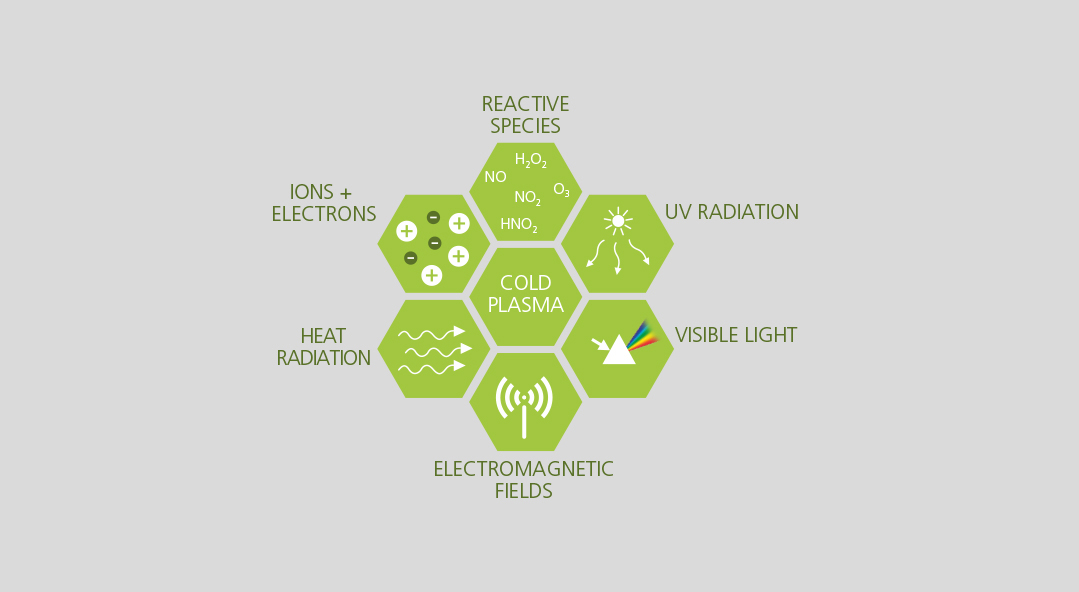
© 2020 terraplasma medical GmbH
Plasma and plasma crystals:
chaotic matter, tamed with dust
Matter occurs in four states: solid (well-ordered), liquid (less ordered), gaseous (disordered) and plasma (highly disordered). A plasma is an ionised gas. A plasma crystal is even more extraordinary. Here, small solid particles measuring approx. one thousandth of a millimetre are added to the plasma. Thus, the plasma can crystallise into a “complex plasma”. The particles form grids with relatively large spaces (approx. 1/10 of a millimetre) in which the plasma is sort of “trapped” – the chaotic matter has been tamed and can now be explored under a microscope. These structures are even visible to the naked eye. What usually happens at terrific speed on the atomic level, takes place considerably enlarged and in slow motion through “taming”. This discovery was made in 1994.
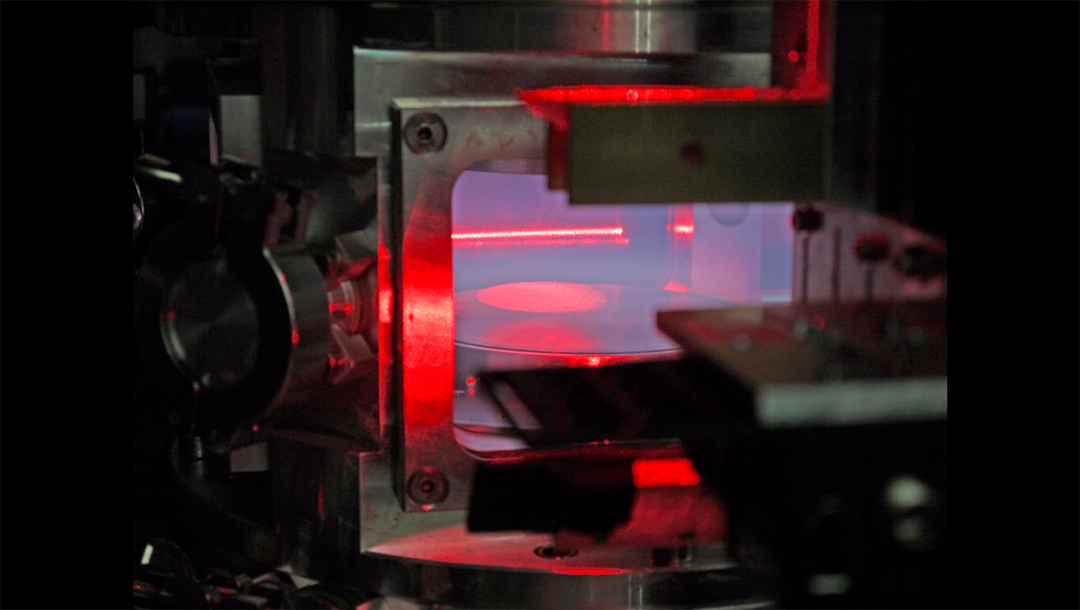
© DLR
Plasma crystals can be investigated best when gravity does not affect crystallisation. The ideal location: a laboratory in space! Within a German-Russian cooperation, the “PKE Nefedov” laboratory was already on board at the beginning of the ISS mission in 2011. Since 2014, the 4th generation of the laboratory has been in operation on the ISS: PK-4. It is important to astrophysics to understand plasma since 99 per cent of the visible matter in space are in a plasma state. The findings of this basic research are also highly interesting for the semiconductor and chip technology as well as for medical technology.
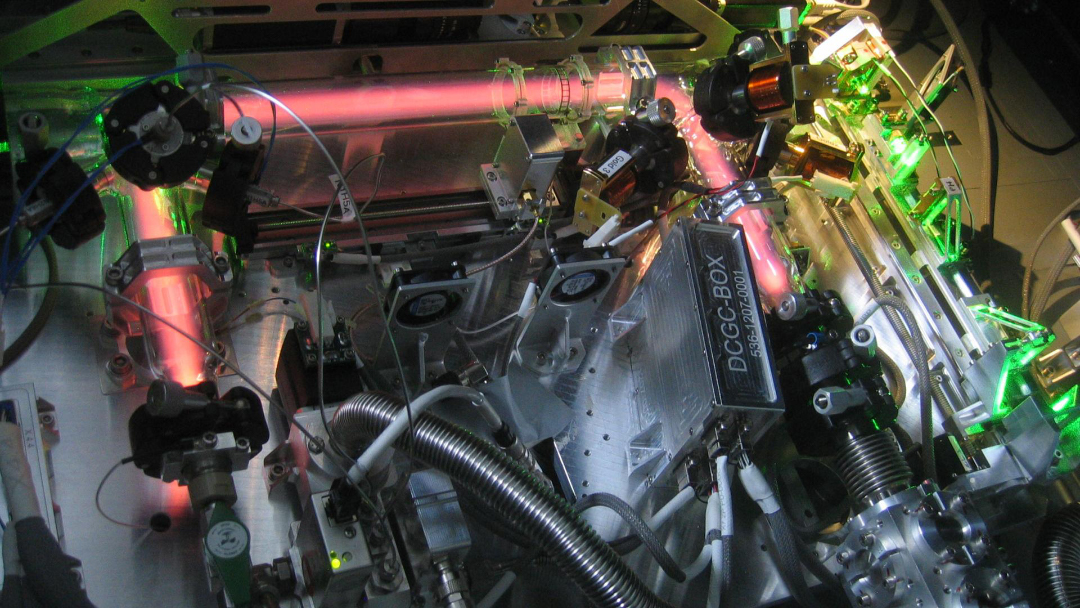
© Max Planck Institute for Extraterrestrial Physics – M. Kretschmer